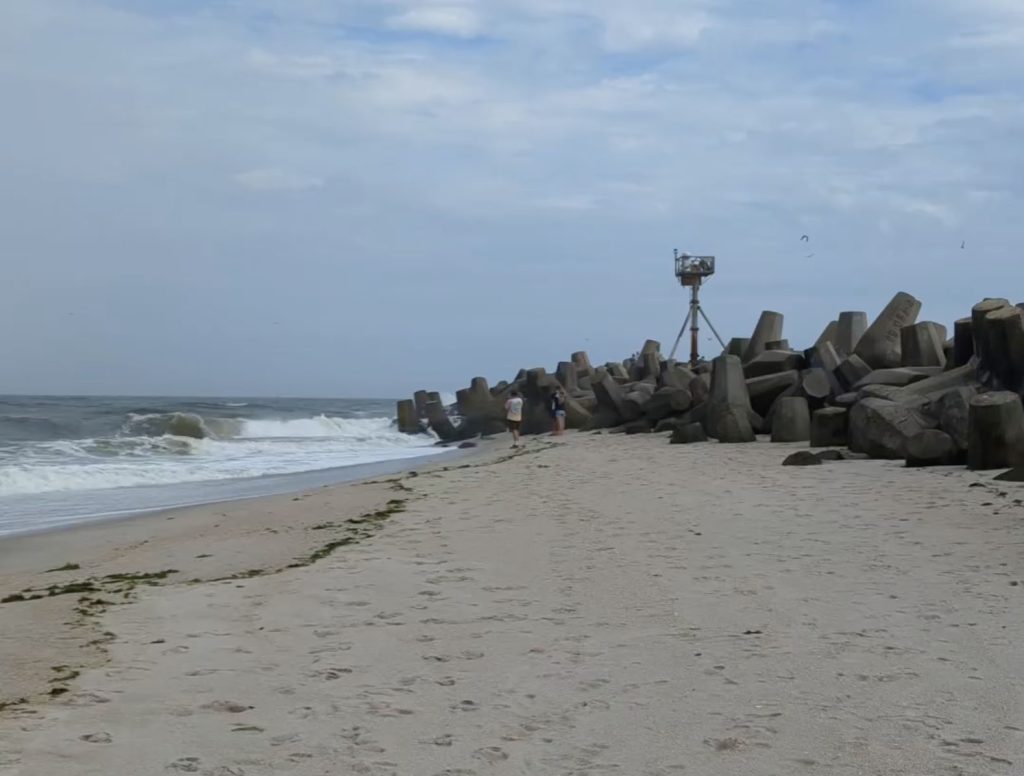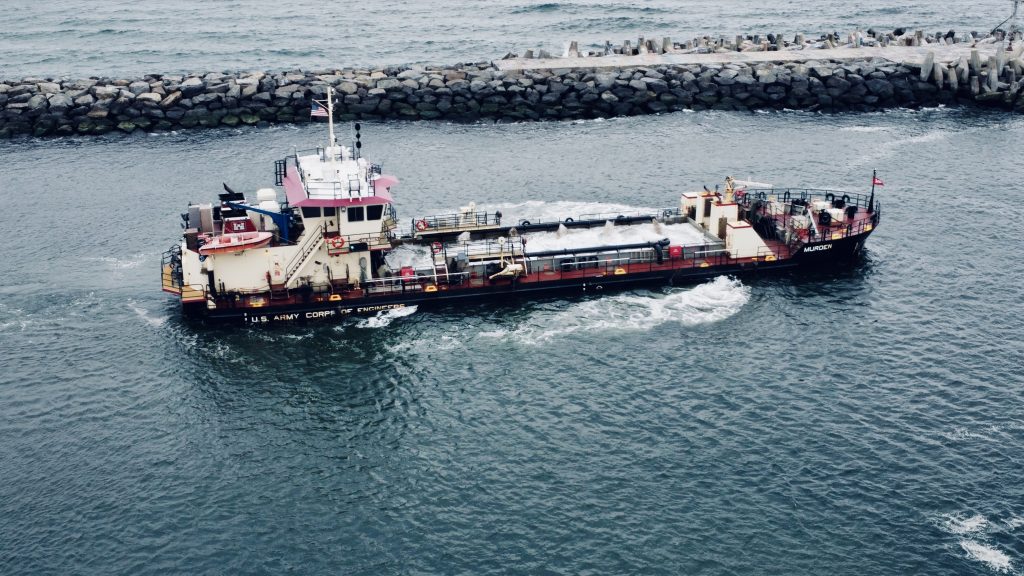
A screenshot captured from the Instagram page ‘Shore Boats,’ which has been following shoaling at Manasquan Inlet. (Video Below)
Beach chairs, kids playing ball, and dozens of people fishing. It sounds like a perfectly normal day at the beach – except this beach is in the middle of one of New Jersey’s busiest waterways.
Over the past week, the prevailing winds that have plagued the Shore area with chilly water temperatures all summer long have led to serious consequences at Manasquan Inlet. The south jetty of the inlet, on the Point Pleasant Beach side, has long been prone to shoaling and has become more pronounced in recent years since beach replenishment projects have been completed up and down the coast. But while the shoaling is often considered a temporary nuisance, the latest instance has turned about a third of the inlet into a beach, complete with breaking waves and enough room for visitors to set up chairs and use the area for recreation.
|
|

A screenshot captured from the Instagram page ‘Shore Boats,’ which has been following shoaling at Manasquan Inlet. (Video Below)
In response to an inquiry from Shorebeat, a spokesman for the U.S. Army Corps of Engineers said the agency’s staff became aware of the situation and made a quick decision to divert the 156-foot dredge boat Murden to the inlet Tuesday. Murden had already been in the area performing routine maintenance at Shark River Inlet in Monmouth County, said USACE spokesman Stephen Rochette.
“We are also working to get an updated survey of the inlet and, based on those results, will coordinate with the US Coast Guard to share the results and advise mariners accordingly,” Rochette said.
Manasquan Inlet falls under the jurisdiction of the Philadelphia region of the Army Corps. Sites in Monmouth County and northward are under the New York region’s jurisdiction. Murden will still be tasked to the project at Shark River Inlet, but will “conduct some operations early this week depending on weather and sea conditions,” Rochette said. The dredger is already scheduled to perform a wider dredging project at Manasquan Inlet later this month and will return after completing some emergency work this week.
The shoaling is ultimately considered a danger for both mariners and beachgoers. Since the entire inlet falls between the markings of the navigational channel, boaters could find themselves aground or, worse, bashed against the jetty rocks at high tide when the sand bar is covered. The presence of the shoal has also created significant breaking waves in the inlet, and poses a deadly risk to those who attempt to swim in the quick-moving waterway. In a previous shoaling scenario, Point Pleasant Beach police physically blocked off the area to prevent visitors from accessing it.
The shoaling also caught the attention of U.S. Rep. Chris Smith (R-NJ), who called on the Army Corps to take “immediate action” to address to situation.
“The build-up of sand on the Point Pleasant side of the inlet against the jetty has reached unprecedented proportions,” said Smith, in a letter to USACE leadership. “This is not only a grounding hazard to vessels, but the waves created inside the inlet as a result of this shoaling are enough to capsize boats that regularly traverse the channel.”
Smith’s office said Murden was initially scheduled to perform a full maintenance dredging project at Manasquan Inlet this week, however a mechanical failure pushed back its schedule.
““Based on these concerns and understanding that the safety and viability of recreational, for-hire and commercial vessels is of utmost importance, especially during these last few weeks of summer when inlet traffic is at its peak, I respectfully request that the Army Corps take immediate corrective action to mitigate this dangerous navigational hazard,” Smith said in the letter.

The USACE dredge boat Murden clears a channel through Manasquan Inlet, Feb. 6, 2023. (Photo: Daniel Nee)
Manasquan Inlet is considered a “dynamic” inlet despite being an improved waterway. It famously closed in 1926 following the opening of the Point Pleasant Canal, leading local municipalities to use early-model fire engines to pump water through a rudimentary channel. Later, in 1931, the federal government reopened the inlet and built its two jetties out of rock dug out of what would eventually become the tunnels of the Second Avenue subway in New York City.
Smith’s office previously secured funding for surveys of the inlet and monitoring of the bottom of the Manasquan River after a similar – but less severe – shoal formed in the summer of 2022.

Advertisement

Local Business
Mixed-Use Development Sought Next to Popular Point Beach Bar









